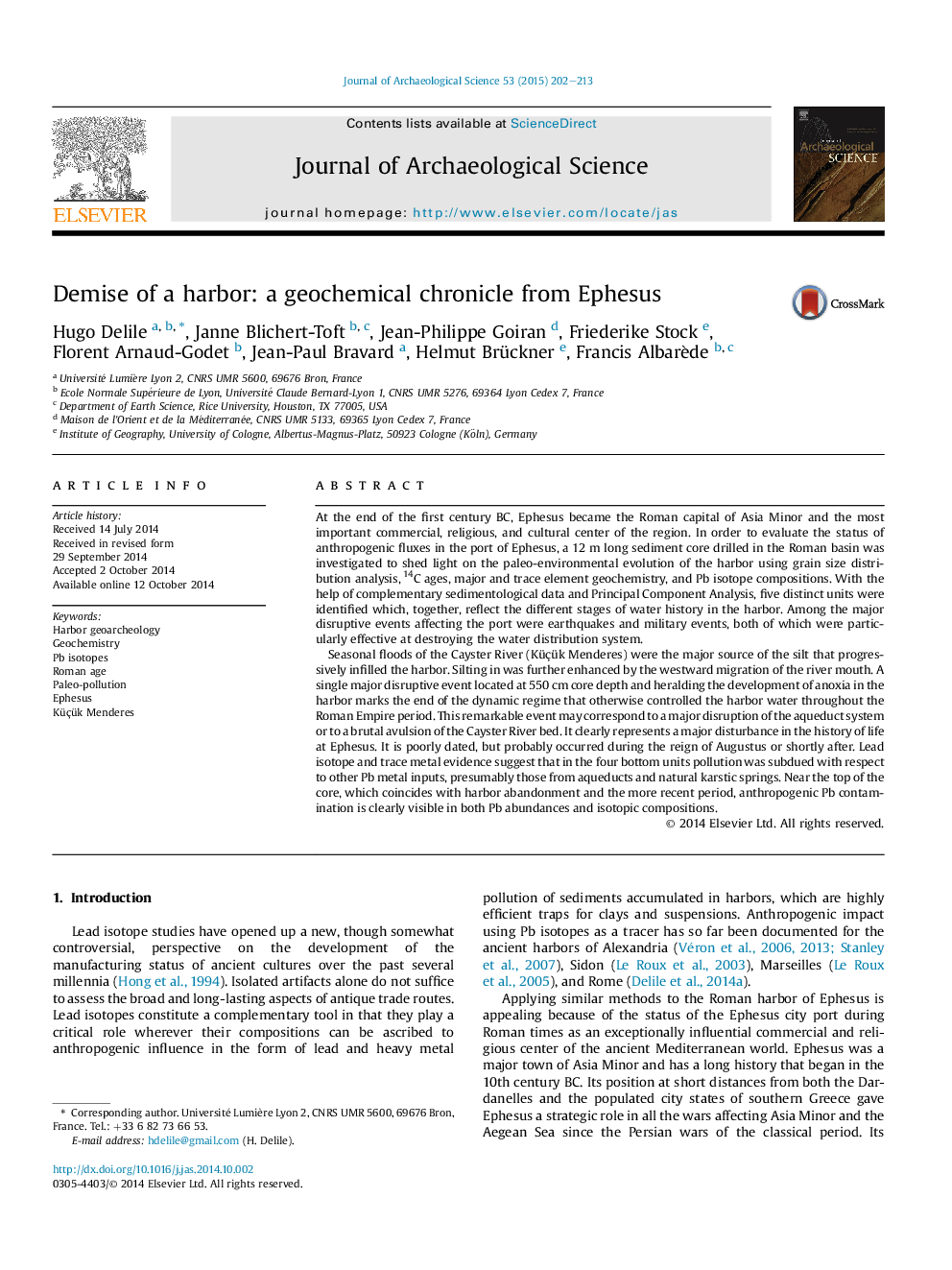| Article ID | Journal | Published Year | Pages | File Type |
|---|---|---|---|---|
| 7442525 | Journal of Archaeological Science | 2015 | 12 Pages |
Abstract
Seasonal floods of the Cayster River (Küçük Menderes) were the major source of the silt that progressively infilled the harbor. Silting in was further enhanced by the westward migration of the river mouth. A single major disruptive event located at 550Â cm core depth and heralding the development of anoxia in the harbor marks the end of the dynamic regime that otherwise controlled the harbor water throughout the Roman Empire period. This remarkable event may correspond to a major disruption of the aqueduct system or to a brutal avulsion of the Cayster River bed. It clearly represents a major disturbance in the history of life at Ephesus. It is poorly dated, but probably occurred during the reign of Augustus or shortly after. Lead isotope and trace metal evidence suggest that in the four bottom units pollution was subdued with respect to other Pb metal inputs, presumably those from aqueducts and natural karstic springs. Near the top of the core, which coincides with harbor abandonment and the more recent period, anthropogenic Pb contamination is clearly visible in both Pb abundances and isotopic compositions.
Related Topics
Physical Sciences and Engineering
Materials Science
Materials Science (General)
Authors
Hugo Delile, Janne Blichert-Toft, Jean-Philippe Goiran, Friederike Stock, Florent Arnaud-Godet, Jean-Paul Bravard, Helmut Brückner, Francis Albarède,
